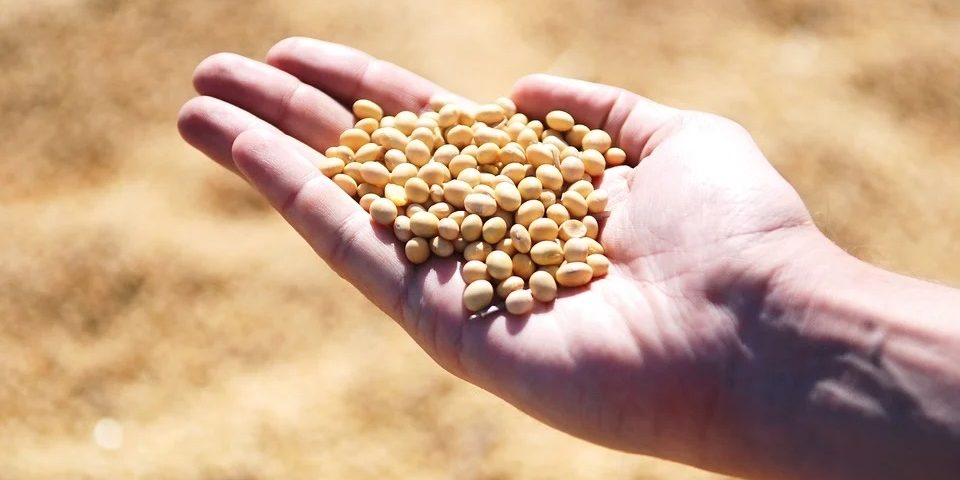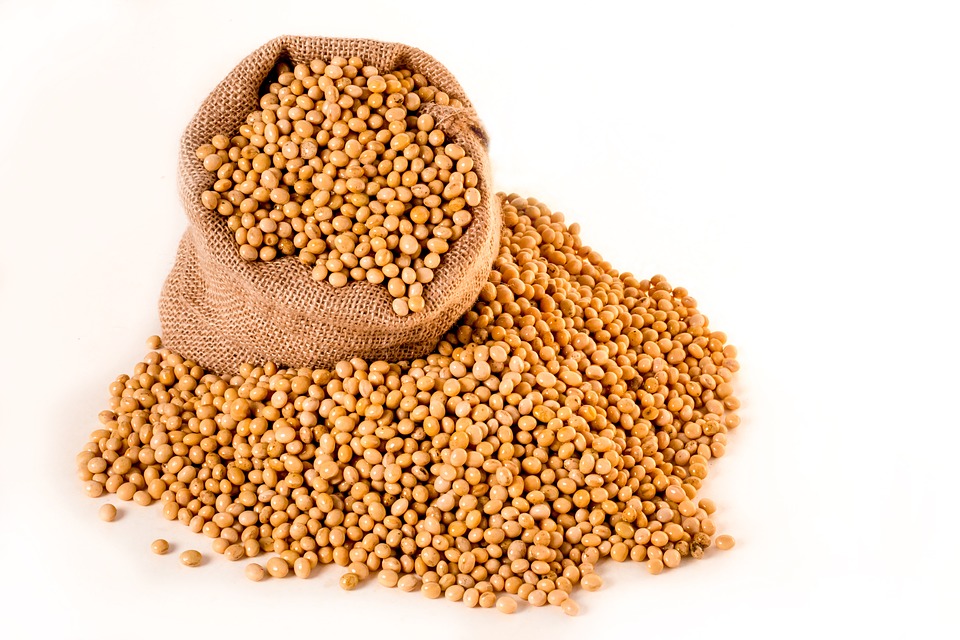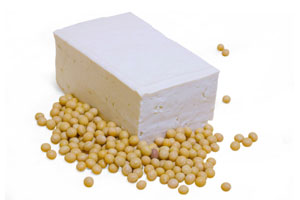Soybeans: A Natural Remedy for Hot Flashes
By Nicky VanValkenburgh
If you’re looking for a natural remedy for hot flashes, you might try eating 1/2 cup soybeans daily.
Sounds crazy? I just spent two months eating 1/2 cup soybeans everyday, and my hot flashes decreased from five or more flashes per day, to zero hot flashes. The results were very encouraging to me. I feel better, sleep better, and my hot flashes are gone.
Let me explain how it happened. I was part of a test group with the Physicians Committee for Responsible Medicine (PCRM.) I was in a group of 25 women who met online once a week on a zoom call. The group was part of a study led by Dr. Neal Bernard and others. We were instructed to eat 1/2 cup of soybeans daily. Plus, each participant was given ten pounds of dried soybeans, a digital scale, and encouraged to attend weekly online meetings. Participants kept daily records of their hot flashes — when they happened, how long they lasted and if they were mild, moderate or severe.
What are hot flashes, and what causes them?
Ladies, if you’re having hot flashes, you know exactly what I’m talking about. A hot flash is a sudden feeling of heat, your face flushes and you sweat intensely. We don’t know exactly what causes hot flashes, but they are related to menopause. (I’ll explain more about this later)
My personal experience with hot flashes
I was waking up five or more times at night with feverish hot flashes. My skin felt hot, red and sweaty. It lasted anywhere from 30 seconds to two minutes. I’d wake up, often from a deep sleep, and feel extremely hot, followed by cold chills. I felt frustrated, confused and concerned.
A hot flash is the sudden feeling of intense heat in the body. For me, it was heat from my head to my feet. My skin got red, as if I was blushing. It reminded me of having the flu, with hot flashes followed by cold chills. My hot flashes came without warning, day and night. I felt like my body was being hijacked. My sleep was disrupted. I wondered if I’d ever be able to sleep though the night again.
Why was this happening to me?
I’m vegan, in my 50s, and haven’t had my menstrual cycle in at least seven years. I wasn’t sleeping well. I felt like my life was spiraling out of control, and wondered if anything could be done.
Evidently, hot flashes result from a drop in estrogen levels in the female body. Hormone therapy is one way to relieve these symptoms. In other words, taking estrogen to counteract the natural drop in estrogen during menopause. Although this method can be effective, it comes with some risks. Taking estrogen, especially for a long time, may increase your risk of a blood clot, stroke, or breast cancer. Taking estrogen may not be an option for many women, because of the risks involved, also taking into consideration your health and family history.
Desperate for relief from hot flashes
If you’re having hot flashes, you’re probably desperate for some relief. I was sleeping with a fan next to my bed. That way, I could pull off the sheets, turn on the fan and wait for the hot flashes to subside. During the day, I took a handheld paper fan with me everywhere I went. I never knew when a hot flash would hit me, and I did my best to be prepared.
Of course, I needed more than fans. I was desperate for relief from hot flashes. That’s why I joined the test study group from the Physicians Committee for Responsible Medicine (PCRM.) I agreed to eat 1/2 cup of soybeans daily, and record all my hot flashes. I recorded my weight once a week.
At the beginning of the study, all participants completed a Baseline Questionnaire and recorded what they ate for three days. This questionnaire and diet record was also done at the end of the study.
What are Isoflavones?
Turning to natural alternatives, such as soy, can help women manage their hot flashes with fewer risks. Examples of soy include soybeans, tofu, soy milk, tempeh and soy yogurt. Soy contains chemical compounds called isoflavones that may tame hot flashes.
Isoflavones are part of a group of plant-based chemicals called phytoestrogens. “Phyto” is a Greek root word meaning “plant.” Estrogen is a female hormone that regulates functions in both women and men. Phytoestrogens, though plant-based, function much like animal estrogen in humans. When we eat phytoestrogens, our bodies may respond as if our own estrogen were present.
The main isoflavones in soy are genistein and daidzein. When you eat soy, bacteria in your intestines break it down into its more active forms.
Once in your body, soy isoflavones bind to the same receptors as estrogen. Receptors are like docking stations on the surface of cells. When isoflavones bind to some receptors, they mimic the effects of estrogen. When they bind to other receptors, they block estrogen’s effects.
When isoflavones mimic estrogen, they might help reduce hot flashes and other symptoms of menopause.
Isoflavones in soy beans could reduce hot flashes
Dr. Neal Barnard at PCRM theorized that the isoflavones in soy beans would reduce hot flashes. Each participant in the study ate 1/2 cup boiled soybeans daily, which is 50 to 60 grams of isoflavones.
Here are some alternative equivalent soy products that will give you 50 to 60 grams of isoflavones:
Soybeans, boiled 1/2 cup
Soybeans, green, boiled (Edamame) 1 3/4 cup
Soybeans, dry roasted 1.3 ounces
Soy yogurt 1 1/3 cup
Tofu, soft 8.5 ounces
Tempeh, raw 3 ounces
Tempeh, cooked 5.5 ounces
Soy protein concentrate, water washed 2 ounces
Soy protein concentrate, alcohol washed 16.75 ounces
Miso 1/2 cup
Soy milk, low fat 8 1/2 cups
Scientific support for eating soy to reduce hot flashes
In 2002, The Women’s Health Initiative published research findings that the risks of hormonal therapy outweigh its benefits for many women (8). This groundbreaking study, along with similar research, led women of the Global North to look for reduction of menopausal vasomotor symptoms outside of their doctors’ offices.
In a double-blind study of post-menopausal North American women, those taking 60 mg isoflavones for three months experienced a 57% reduction in hot flashes and a 43% reduction in night sweats when compared to women who were not taking any kind of vasomotor intervention (5). This study stands with many others to prove the benefits of isoflavones and phytoestrogens during menopause. In a randomized, double-blind, placebo-controlled study on 125 menopausal women, participants consuming an herbal supplement containing 72 mg isoflavones from various origins saw a more significant decrease in menopausal hot flashes than those treated with a placebo supplement. Though both groups saw a decrease in hot flashes during the six-month duration of the study, the group consuming isoflavone-containing supplements saw a significant reduction in hot flashes at both the 4- and 6-month periods of the treatment when compared to the placebo group. Reductions in LDL cholesterol were present for the intervention group, though not significant (2). Similar results have been seen in similar studies using a variety of study methods in multiple countries both in the Global North and South.
According to a 16-week double-blind, randomized, controlled trial study done by doctors in the Department of Obstetrics and Gynecology at the State University of Campinas, Brazil, consumption of soybean isoflavones had a significant impact in decreasing menopausal hot flashes, so much so that 90 mg daily isoflavone consumption was shown to be 4.2% more effective at reducing menopausal hot flash symptoms than 1 mg estradiol for hormonal therapy (3).
In an observational pilot study on 29 perimenopausal and 21 postmenopausal women, consuming 100 mg soy isoflavone per day for 12 weeks were shown to decrease hot flashes by 40% in both groups of women in Northern India, showing isoflavones to have the greatest effect in decreasing mild to moderate hot flashes of all menopausal vasomotor symptoms. Perimenopausal subjects experienced a 36.11% improvement of severe hot flashes using this treatment (1).
In a 12-week randomized study of 130 peri- and post-menopausal women averaging five or more hot flashes daily, those consuming 100-200 mg of isoflavones daily saw a significant decrease in hot flashes (2.4 average hot flashes each day) compared to the original 5+ each woman experienced at the study’s baseline. Women who were producers of the hormone Equol saw a greater decrease in hot flashes at the 100-200 mg dose than those who were not Equol producers, though both groups of women saw a noticeable decrease in hot flash frequency. Another intervention group consuming 33-66mg of isoflavones each day saw lesser decreases than the group consuming higher amounts of isoflavones daily. It may also be concluded that isoflavone consumption multiple times daily has a greater potential for effectiveness (6).
A literature review published by The North American Menopause Society in 2010 analyzed hundreds of studies written about the effectiveness of isoflavones in menopausal vasomotor symptoms. Within this review, researchers determined that isoflavones are likely “modestly effective on midlife women”, but isoflavone-containing supplements paired with genistein and/or S-Equol may be more beneficial in hot flash reduction (7).
Similarly, a different 2019 review found evidence that “favors the use of isoflavones due to their safety profile and benefit to overall health” (4). If one thing is for sure, soy consumption is safer than hormonal therapy.
Though more studies must be done to validate the true effectiveness of using isoflavones to reduce menopausal vasomotor symptoms, many studies indicate a decrease in hot flashes from various forms of isoflavone consumption on menopausal hot flashes. Based on the aforementioned studies, a minimum of 60 mg of isoflavones consumed each day seem to reduce hot flashes noticeably in both equol producers and non-producers. However, these numbers likely vary between cultural norms of soy consumption. As interest in alternatives to hormonal therapies for menopause increase across the Global North and South, a rise in the effectiveness of isoflavones for menopausal hot flashes will likely increase.
Dr. Neal Bernard’s hot flash soybean study
Earlier I mentioned Dr. Neal Bernard’s study, which sets out to determine if eating 1/2 cup of soybeans results in a significant reduction in hot flashes. This study is still underway, but so far many participants have reported favorable results. The key seems to be consistency. You can’t eat soybeans once and then you’re done. You must eat the soybeans everyday, at least a 1/2 cup, for two months. It’s like the only adage: Practice makes perfect, and repetition creates mastery.
Alternatives to soybeans
If you get bored with eating soybeans, you could try some of the other soy products:
Soybeans, green, boiled (Edamame) 1 3/4 cup
Soybeans, dry roasted 1.3 ounces
Soy yogurt 1 1/3 cup
Tofu, soft 8.5 ounces
Tempeh, raw 3 ounces
Tempeh, cooked 5.5 ounces
Soy protein concentrate, water washed 2 ounces
Soy protein concentrate, alcohol washed 16.75 ounces
Miso 1/2 cup
Soy milk, low fat 8 1/2 cups
Bottom line: If you struggle with hot flashes, try eating ½ cup of cooked soybeans everyday, for at least two months. You can buy the dried soybeans at Whole Foods or order them on Amazon. Soy beans are easy to prepare. I soak mine overnight in a bowl of water. The next day, I cook my soy beans in my Instapot and sprinkle them in my stews, salads and soups. It’s fairly easy. If I can do it, you can too! Like me, you might discover that your hot flashes are gradually decreasing and then fading away altogether. Hurray for soy beans! They seem to be a natural cure for hot flashes.
Biblography
1. Ahsan,M.Mallick,A.K.,(2017).The Effect of Soy Isoflavones on the Menopause Rating Scale Scoring in Perimenopausal and Postmenopausal Women: A Pilot Study, 11(9), FC13-FC16. https://www.doi.org/10.7860/JCDR/2017/26034/10654:
2. Cancellieri, F., Leo, V. D., Genazzani, A., Nappi, C., Parenti, G., Polatti, F., . . . Nichelatti, M. (2007). Efficacy on menopausal neurovegetative symptoms and some plasma lipids blood levels of an herbal product containing isoflavones and other plant extracts. Maturitas, 56(3), 249-256. doi:10.1016/j.maturitas.2006.07.001
3. Carmignani, L. O., Pedro, A. O., Costa-Paiva, L. H., & Pinto-Neto, A. M. (2010). The effect of dietary soy supplementation compared to estrogen and placebo on menopausal symptoms: a randomized controlled trial. Maturitas, 67(3), 262–269. https://doi.org/10.1016/j.maturitas.2010.07.007
4. Chen, L. R., Ko, N. Y., & Chen, K. H. (2019). Isoflavone Supplements for Menopausal Women: A Systematic Review. Nutrients, 11(11), 2649. https://doi.org/10.3390/nu11112649
5. Cheng, Guojun MD, PhD1; Wilczek, Brigitte MD, PhD2; Warner, Margaret PhD1; Gustafsson, Jan-Åke MD, PhD1; Landgren, Britth-Marie MD, PhD2 Isoflavone treatment for acute menopausal symptoms, Menopause: May-June 2007 – Volume 14 – Issue 3 – p 468-473 https://doi.org/10.1097/GME.0b013e31802cc7d0
6. Crawford, S. L., Jackson, E. A., Churchill, L., Lampe, J. W., Leung, K., & Ockene, J. K. (2013). Impact of dose, frequency of administration, and equol production on efficacy of isoflavones for menopausal hot flashes: a pilot randomized trial. Menopause (New York, N.Y.), 20(9), 936–945. https://doi.org/10.1097/GME.0b013e318282:
7. North American Menopause Society (2011). The role of soy isoflavones in menopausal health: report of The North American Menopause Society/Wulf H. Utian Translational Science Symposium in Chicago, IL (October 2010). Menopause (New York, N.Y.), 18(7), 732–753. https://doi.org/10.1097/gme.0b013e31821fc8e0
8. Writing Group For The Women’s Health Initiative Investigators. (2002). Risks and Benefits of Estrogen Plus Progestin in Healthy Postmenopausal Women: Principal Results From the Women’s Health Initiative Randomized Controlled Trial. JAMA: The Journal of the American Medical Association, 288(3), 321-333. doi:10.1001/jama.288.3.321



